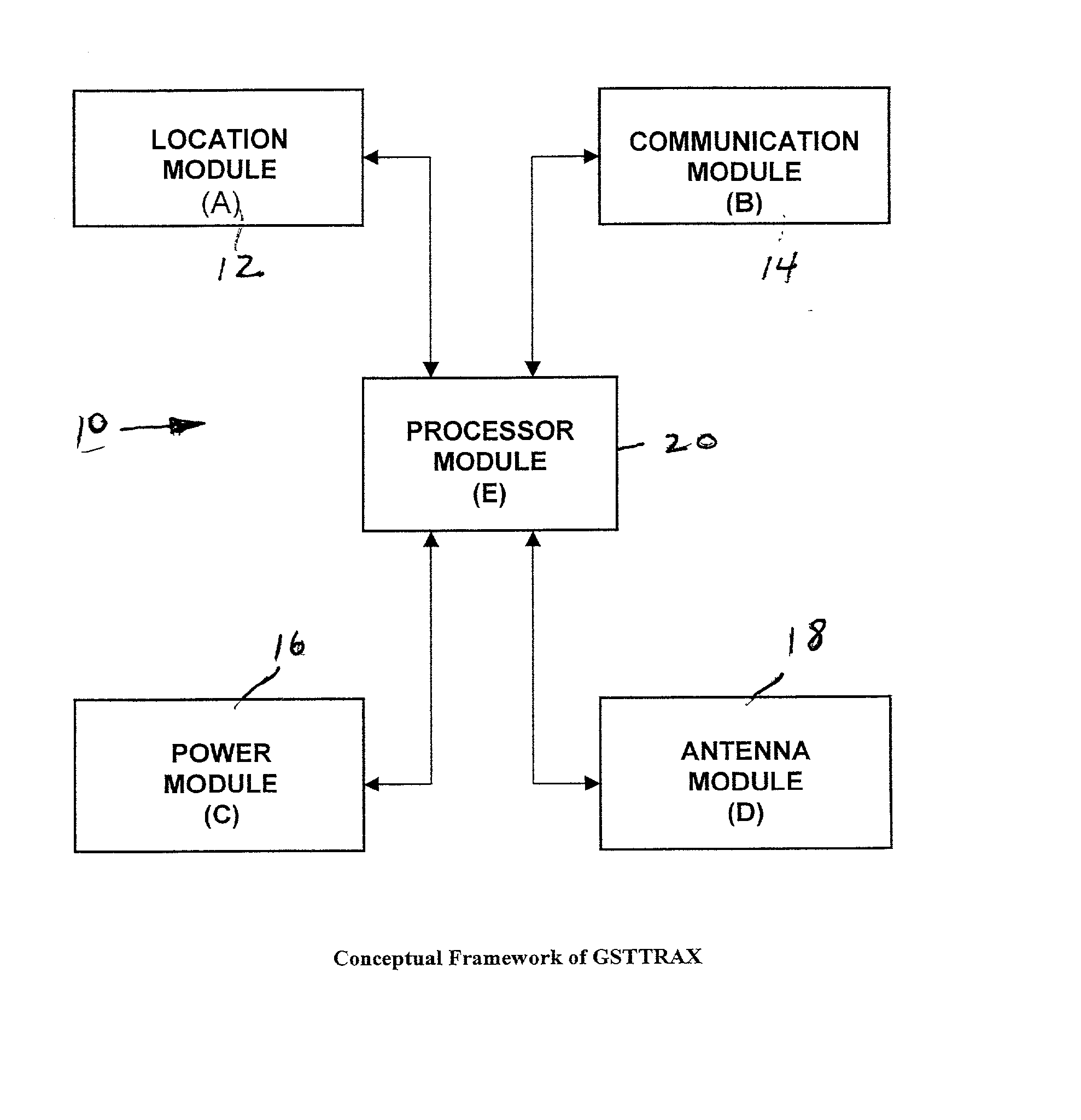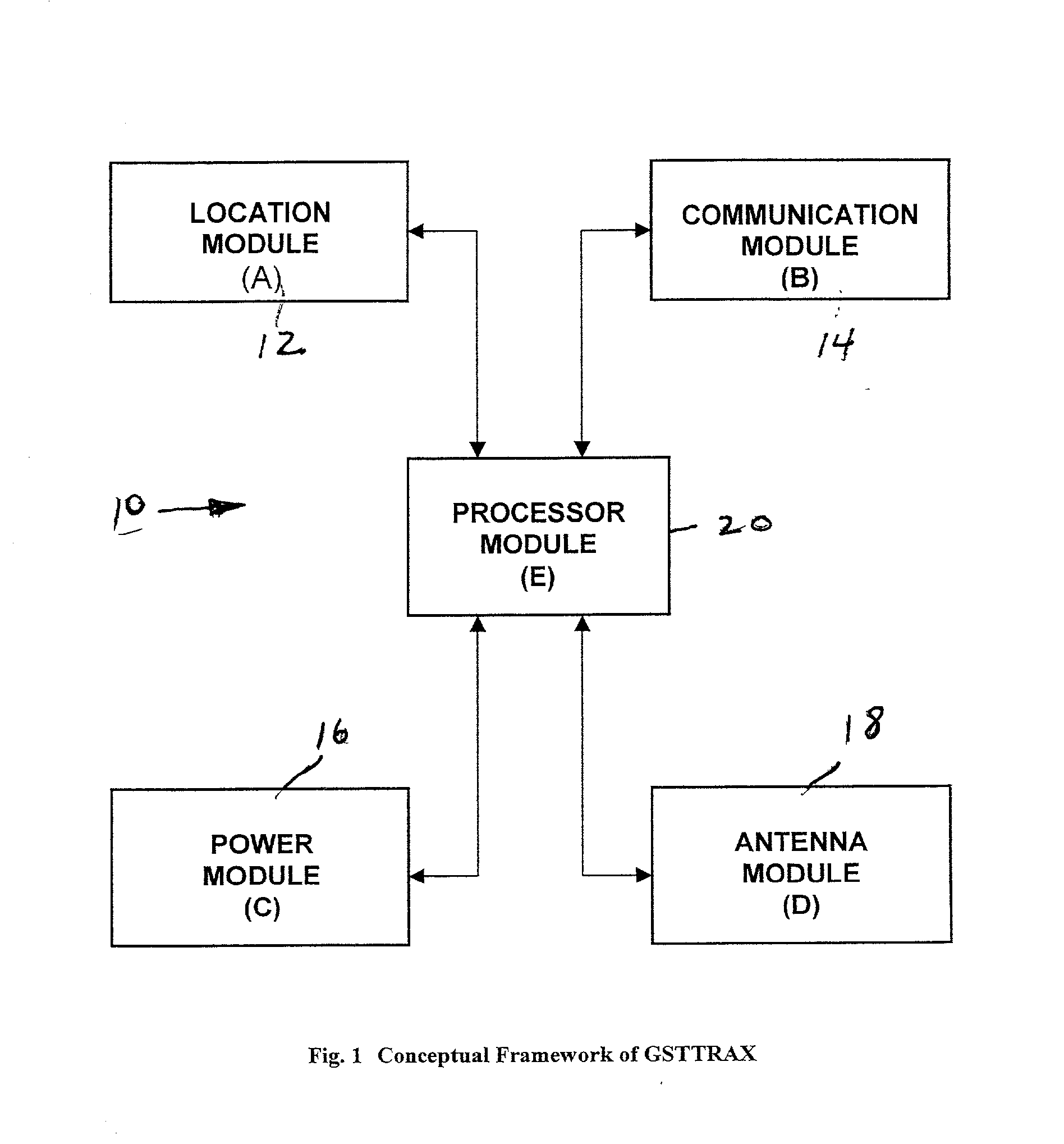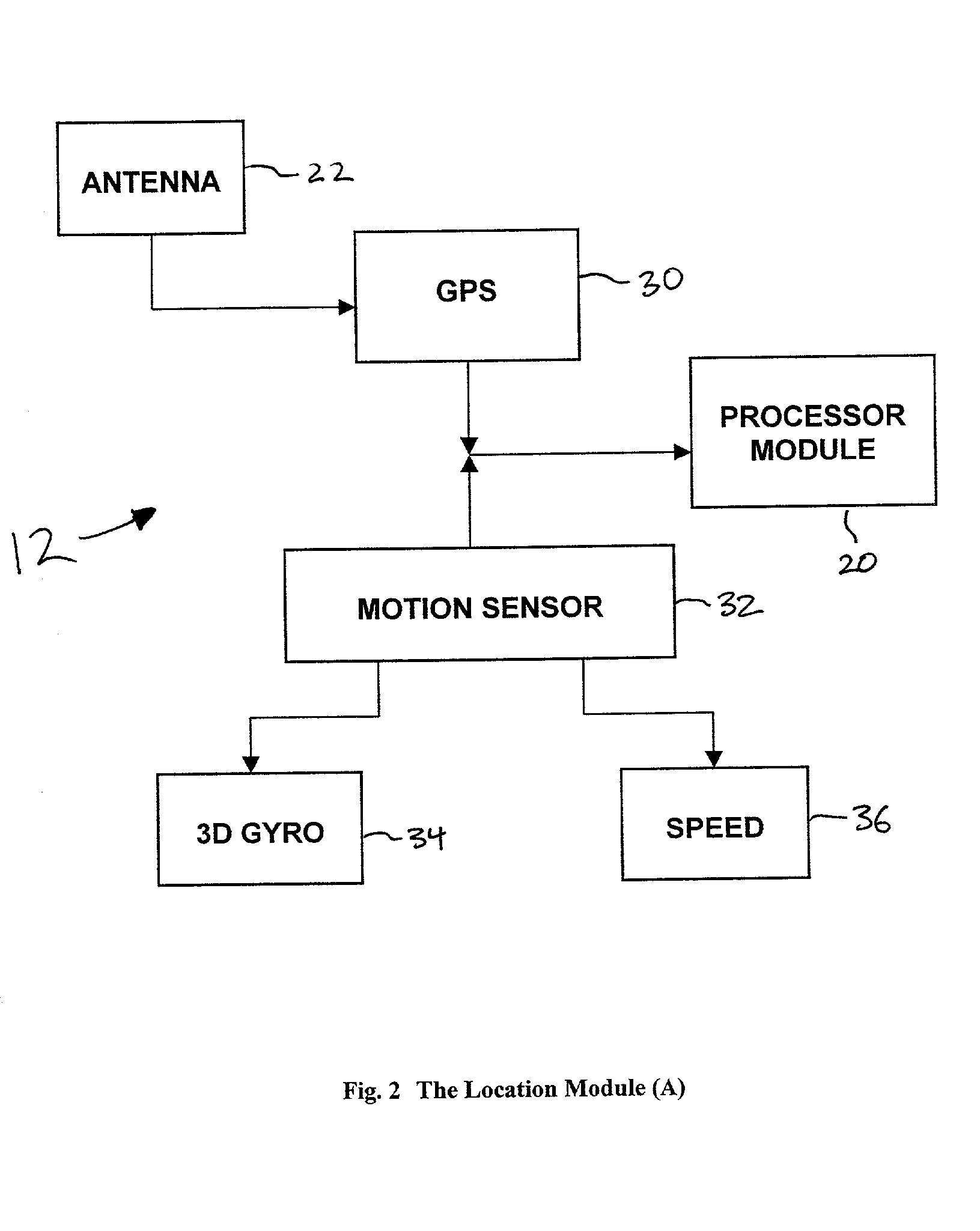Durable global asset-tracking device and a method of using the same
- Summary
- Abstract
- Description
- Claims
- Application Information
AI Technical Summary
Benefits of technology
Problems solved by technology
Method used
Image
Examples
Embodiment Construction
and Utility
[0134] The system 10 is useful for a wide variety of purposes. Listed below are some examples of its possible applications.
[0135] First, inter-continental transportation of any cargo through different vehicles, including ocean liners, trains, and trucks, can be tracked with the system 10. Currently no existing devices can provide inter-continental, multi-mode tracking capability. With the system 10, shipment of valuable commodities, environmentally sensitive materials, military equipments, and any other containers, can be monitored at all times.
[0136] Second, specially delivered packages can be tracked in real-time. Currently package delivery does not provide real-time location information for any specific package. The most commonly used tracking method in the express delivery industry is to register the arrival of a package when it reaches a specific facility. At present, if one needs to know the exact location of an expected package, the best available information is be...
PUM
 Login to View More
Login to View More Abstract
Description
Claims
Application Information
 Login to View More
Login to View More - R&D
- Intellectual Property
- Life Sciences
- Materials
- Tech Scout
- Unparalleled Data Quality
- Higher Quality Content
- 60% Fewer Hallucinations
Browse by: Latest US Patents, China's latest patents, Technical Efficacy Thesaurus, Application Domain, Technology Topic, Popular Technical Reports.
© 2025 PatSnap. All rights reserved.Legal|Privacy policy|Modern Slavery Act Transparency Statement|Sitemap|About US| Contact US: help@patsnap.com



